Eurail Passes are famous as a way to save money while exploring Europe, but they are also confusing and often misunderstood. They are still an amazing money-saving tool for certain types of travelers, and not a wise idea for most others. Before Europe introduced dynamic rail pricing (like airfares, where the price varies depending on when you buy it), a Eurail Pass was an easy way to save money since all tickets had fixed prices that were generally fairly expensive. These days most travelers can save far more money just by buying their train tickets at least a few weeks in advance.
That said, Eurail Passes are still great for longer trips and especially for people who like to make plans as they go. Dynamic rail pricing made advanced tickets much cheaper, but it also made last-minute tickets MUCH more expensive. Below we will discuss Eurail Passes and whether they are a good idea for your trip or not.
Disclosure: This is a reader-supported website and some of the links are affiliate links where a small commission is paid to help keep this site going.
Note: This article was written in 2012 and has been continuously updated since then, so all information is current as of April, 2024.
Eurail 2024 changes: New countries and a mobile version
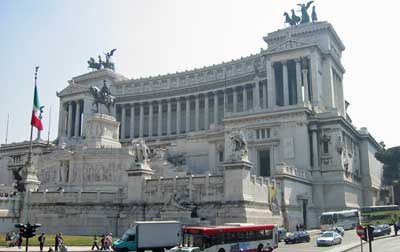
Aside from that it’s just the normal fact that they have updated the timetables as of December 2023 and have a few promotions going on, but those usually don’t happen over the busy summer season.
Eurail passes are now available in a mobile version
Until very recently, Eurail Passes were only available in paper form and they were quite confusing at first. You’d get a pass with a series of empty boxes on it and you’d need to enter your trip before you’d use your pass each day and then have the first conductor verify it. If you lost your ticket (and this was not uncommon), it was a whole ordeal to attempt to get a replacement.
Again in 2024 Eurail offers a fully mobile version that is delivered instantly to your mobile device with no delivery fee. And if you somehow lose your phone, you can resume using your Pass on your replacement with no extra headache. This is MUCH more convenient in every way and as long as you can keep track of your phone you’ll always have your train pass handy.
If your trip will be 2 weeks or less, a Eurail Pass probably won't be worth it
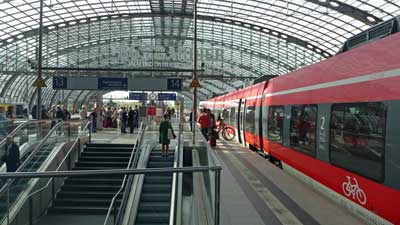
Eurail Passes are ideal for travelers on longer trips, and especially those who don’t want to plan all of their destinations and dates far in advance. If you have your itinerary pretty much planned out and you don’t require much flexibility, you’ll be far better off just locking in your dates and buying your train tickets as early as you can. Again, they can be surprisingly cheap if you buy 2 to 4 months out.
If you are age 27 or younger, a Eurail Pass is probably worth it

With this in mind, if you are lucky enough to still be 27 or younger, you should seriously think about getting a Eurail Global Pass Youth, partly because the sense of freedom instantly gets more expensive at age 28. The age cutoff was 25 until recently, so this change is a great deal for anyone who will be 26 or 27 at the start of their trip.
You aren’t guaranteed to save money by buying a Youth Eurail Pass, but chances are good that you WILL save money and you’ll definitely save a lot of hassle as well. Especially now that Eurail Passes come in a mobile form, it’s even that much more convenient to just hop aboard any train that is about to leave the station and not worry about buying or even having a ticket. Especially for young people, it can be really fun and exhilarating to literally just walk into a train station with your backpack and look at the departure board and then decide where to go at that moment.
If you are age 60 or over, a Eurail Pass could also be great value
Another fairly recent change is that anyone who is 60 years or older at the start of the use of a Eurail Pass now gets 10% off the normal adult fare. That new discount is going to make this a great value for many travelers who might have been on the fence about buying a full-price pass before.
>>>Check prices on Eurail Passes
If you are planning on traveling in 1st Class anyway, a Eurail Pass is probably worth it
Most 2nd Class trains provide similar comfort and legroom to Business Class airline seats, or at least close enough, so for most people it’s not worth the added expense for 1st Class. However, if you are rich or elderly or fear contact with strangers, a 1st Class Eurail Pass is probably worth it no matter what.
Not only do you get much more comfort and legroom in 1st Class, with only 3 seats across instead of 4, but there is another advantage to 1st Class on European trains. Since it’s mostly business travelers and wealthy people traveling in 1st Class, the carriages are almost always mostly empty except in the mornings and late afternoons between large cities. In 2nd Class the only available seats might be two seats in an 8-seat cabin with all the other seats taken up by a loud family or a group of rowdy friends. In 1st Class you are all but guaranteed a peaceful ride, and usually plenty of empty seats from which to choose.
A hidden Eurail Pass benefit: Making extra stops on travel days for free
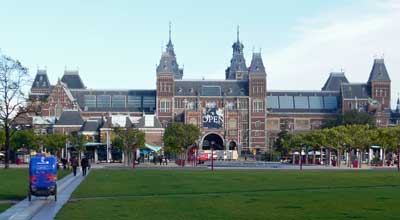
Brussels in particular is one I recommend a short stop in because the small historic center around what they called the Grand Place is amazing and gorgeous, while the rest of the city is rather boring by European standards. With a Eurail Pass you can jump off the train in Brussels and explore the city center for a few hours (luggage storage is cheap and easy) and maybe have lunch, and then hop on a later train to complete your journey to Amsterdam. There are opportunities like this on many if not most trips between larger cities, and if you buy the point-to-point tickets you have to stay on the train you booked.
Another example is the high-speed train between Barcelona and Madrid, which takes about 2.5 to 3 hours in each direction. There are some interesting cities in between, but in this case you could take a morning train from Barcelona to Madrid and then check into your accommodation, and then hop on another train from Madrid to Toledo, which takes about 30 minutes and costs €14 each way. Toledo is a historic and fascinating town, but it’s also pretty small and you can explore the main sights in an afternoon. With a Flexi Eurail Pass where you buy a certain number of travel days, you can save more money by adding on these sorts of nearby stops on travel days.
If you'll be touring major cities within ONE country, a single-country pass might be perfect, and Second Class passes are available for all ages
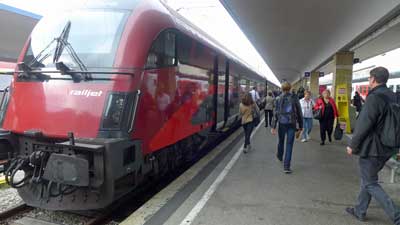
Single-country passes are still available and they MIGHT be good value for you, but it depends on which country and how much traveling you’ll be doing. If you plan on going all over a larger country such as Germany, France, or Spain, and especially if you like to make plans as you go, a Single-country pass for one of those might be your best deal. On the other hand, smaller countries (such as the Netherlands) or countries where train tickets are already fairly cheap (such as Italy) might be harder to get value out of. Long story short, for single-country passes you really need to check fares of the places you plan on going and see how they add up compared to the pass.
>>>Check prices for Single Country Passes
Eurostar (between London and Paris or Brussels or Amsterdam) tickets are now included for Eurail Pass holders for a €30 reservation fee
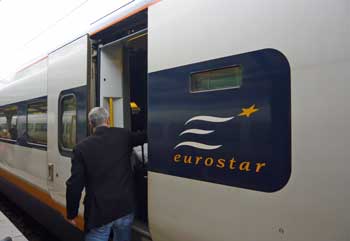
Our recent tests show that Eurostar fares one-way from London to Paris can be as low as €49 if you book about 3 months out, or as expensive as €214 for the same seat if you wait until the day of travel to buy. Round-trip/return tickets can be even cheaper if there is a promotion running.
>>>Check Eurostar prices
If you are on a really low budget, a Eurail Pass isn't a good idea
Here’s the thing. As we’ll discuss below, there are many potential benefits to Eurail Passes, and they will often save you money, but they do cost a lot and they only really save you money when traveling in the more expensive countries.
So let’s say you have a flight to Rome and then US$2,000 to last you a month after you arrive. Buying a Eurail Pass before you go would help you see a lot in that month, but you’d practically need to sleep in parks for your funds to last the whole time. You’d be better off moving slowly in the southern countries, or just in Italy itself, as a way to have the best holiday on your budget. You might also be tempted to use a Eurail Pass mostly on night trains so you can save the cost of a hotel or hostel, but those aren’t ideal for most of us.
The cheapest way to get around Europe by rail is to buy all train tickets online at least a couple months in advance. The fares are low, but they are non-refundable and non-changeable. See how far in advance you should buy train tickets to get those attractive fares.
If more than a little of your travel will be in eastern Europe, a Eurail Pass isn't a good idea
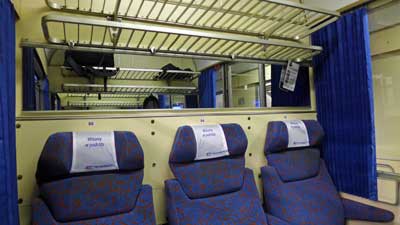
The good news is that the trains operating in this region, and the buses that operate alongside and/or where trains aren’t running, are quite cheap. So if any significant part of your trip will be into this region, a rail pass doesn’t make sense.
Basic types of Eurail Passes
Long gone are the days of the simple options, replaced by specialized passes that are meant to appeal to different styles. It should be pretty easy to figure out which is best for you, and then keep going down the page to decide if it’s worth it at all.
Eurail Global Pass – 4,5, or 7 days within 1 month or 10 days within 2 months
Until recently the minimum number of travel days with 10 days within 2 months, but now you can buy as few as 4 days within 1 month for about €200 to €250 (for first class). This can actually be an interesting strategy if you are planning many shorter and cheaper trips (like within Italy or Eastern Europe), and also 4 or 5 longer trips such as Berlin to Amsterdam. This way you can buy only 4 or 5 travel days and only use them for your most expensive travel days, and just pay as you go or buy cheap advance tickets for your other journeys.
Eurail Global Pass – 15 to 90 consecutive days
This variation allows for unlimited travel on the system for between 15 and 90 total days. They are really only a good idea for people who are certain they are going to travel very often, with much of it being in the north of Europe. The problem with them is that if you really try to get your money’s worth, you will probably ruin your trip by spending too much time on trains in general. On the other hand, if you will be in Europe for 2 or 3 months and plan on traveling around a lot, you can get a LOT of use out of a longer pass. The 3-month pass is around €900 so it’s literally about €10 per day. Imagine going back and forth between Berlin and Munich or Barcelona and Madrid for €10 per day!
One Country Pass
Obviously these are for travel within one country only. Again, they can be great deals if you plan on extensively moving around one particular country.
Where to buy your Eurail Pass
Eurail Passes are cheapest and easiest to buy online, primarily from two main sources which offer all the same products at the exact same prices:
This is a reliable company based in the Netherlands but with fulfillment offices in the US and Ireland. Price of Travel is a partner with this company, and if you use the links of this site we earn a small commission to help keep this site online. Eurail.com is usually cheaper than RailEurope (discussed below) by the way.
They were founded in the 1930s and are based in New York, but owned primarily by the French and Swiss rail companies. They offer free shipping (2 to 3 business days) on all orders of US$399 or more, although now that a mobile version is available, this is meaningless. Price of Travel is a partner with this company, and if you use the links of this site we earn a small commission to help keep this site online.
Reservations on European trains for rail pass holders
For most of the fastest trains between major cities you’ll need to reserve a seat even with a rail pass. It can usually be done just before you leave and the cost is usually around €5. Here’s a full list of which European trains require reservations and which don’t.
Reservations are required on all intercity (longer distance) trains in or involving France, Spain, Switzerland, and Italy. For most trains in Germany, Austria, Netherlands, Belgium, and most of eastern Europe, you can usually find trains that don’t require seat reservations. Often, if you don’t leave until after 9:30am or so, you can ride on any train with no seat reservation, but you have to research each leg to be sure.
How to determine which trains require seat reservations, and also get schedules
You can click on the link just above this section for a list of countries and their seat-reservation policies, but in some cases it’s actually a bit more complicated than that. For example, you can generally ride without a seat reservation on fast ICE (Inter City Express) trains in Germany if you depart after 09:30 in the morning. They do this to free up seats for business travelers who pay full fare, and they don’t mind filling up seats with rail pass holders on trains leaving a bit later.
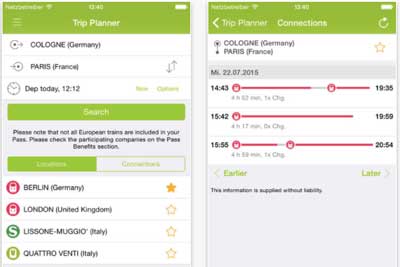
Night trains in Europe are making a comeback
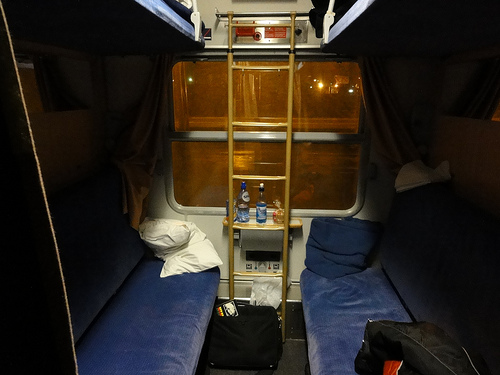
Fast forward to 2024 and night trains are not only expanding service, but they are very trendy. Some of it is nostalgia for the older way of getting around, but most of it is for environmental purposes combined with European hatred for the “low cost airline” experience with RyanAir and Easy Jet etc.
Personally I’m still not a fan of night trains because I find it difficult to sleep on them since they often get decoupled at interim stations in the middle of the night and then coupled onto other trains coming from other places, and I can’t sleep through any of that. But still, they are worth looking into and they are fun to try at least once.
A bit of warning that they tend not to be cheap and even if you have a Eurail Pass you’ll almost certainly want to book a sleeping cabin with a bunk or couchette, and that will come at an extra fee. On the other hand, if you are the sort of person who can sleep sitting upright in a normal seat, then that won’t cost any extra on most overnight trains.
Factors to consider when thinking about any Eurail Pass
Assuming you know which Eurail Saver Pass option is the best one for your type of trip by now, we’ll go over the main factors that should help you decide whether it’s the best idea for you.
Eurail Passes are best for standard ‘medium length’ journeys
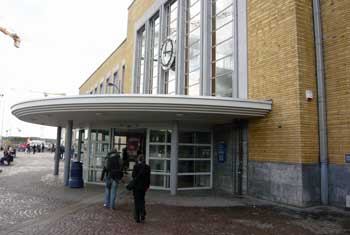
However, if you are determined to travel between Rome and Paris, it’s about a 14-hour journey that will almost certainly be overnight. In this case, a cheap plane ticket is probably better, although taking shorter hops on the train is even better, so spend a day or two in Milan or Lyon on the way instead.
And of course, if you prefer to stop in various small towns between the big ones, then a Eurail Pass won’t pay off, except for the traditional kind for unlimited travel in a given period.
Eurail Passes are better value in northern Europe, France, and Spain, and poor value in Italy
Once you do a bit of research you’ll quickly learn that train tickets (and almost everything else) are much more expensive in Germany, Netherlands, Denmark, Sweden, Norway, and Finland than they are in Greece, Italy, Portugal, and Spain. With this in mind, the regional passes can make sense if you are spending time in the south, but the Global Passes almost certainly won’t. Train tickets in Spain used to be fairly cheap, but in recent years they’ve added new high-speed trains between the major cities, and these are quite expensive.
Unlike most other countries, Italy really subsidizes its train tickets so they are quite reasonable even on travel day, and very cheap if you buy a month or more in advance. For example, you can go between Rome and Florence for around €49 if you buy on travel day, and as little as €19 if you buy well in advance. In most other countries, fares are double or triple that much for similar rides.
So consider your planned itinerary. If more than half of it is in the Mediterranean countries then look into a Regional Pass or just buy tickets as you go, because they tend to be pretty cheap. But if you are planning on spending at least half your time in Paris and places to the north of it, then a Eurail Pass is probably a money saver because those tickets are expensive.
Trains are almost always better than planes
Flying sucks, even in Europe
Until you’ve experienced the joy of traveling around Europe by train you might be tempted to “maximize” your time by flying low-cost airlines between each city. This would be a mistake. In order to get truly cheap airfares you have to purchase long in advance, buying non-refundable tickets. You might also have to commit to flights in the very early morning or in the late evening, because cheap tickets on convenient flights sell out quickly.
And again, most European airports are around an hour outside of the city. They are often on the main train lines, which helps, but still you have to deal with the madness of security and also try to get there at least two hours early. From one city center to any other city center it’s about 5 hours minimum, even if they are close, and those are pretty miserable hours.
Train travel is a positive experience

Not only are all the seats comfortable on trains, but you also have an interesting view most of the time. Better still, trains deposit you in the heart of every city, which is usually the neighborhood with the cheapest hotels and food. It’s a wonderful feeling to step off a relaxing train ride, buy a hot dog or sandwich at a local shop, and then be in your hotel room only about 10 minutes later.
Eurail Passes are better than train tickets alone
As someone who enjoys the process of crunching numbers and looking for value, I have to also mention that I’d buy a Eurail Pass even if it seemed like it would cost a bit more than the individual tickets. With a pass you get an extra element of freedom that is worth a lot more than you might expect until you’ve used one.
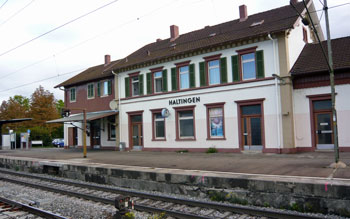
Let’s say you are heading from Amsterdam to Hamburg tomorrow morning. The 09:00 train you planned for might seem a bit ambitious after a long night out, so you can instead opt for the 10:00 or 11:00 train. As long as you walk into Centraal Station 10 or so minutes before departure, you are on. If you are flying you can’t change your ticket, and if you are buying train tickets as you go you have to be in line at the international desk at the train station at least 30 minutes early, and even then you might miss it if they are busy.
Freedom and getting to feel like a big shot
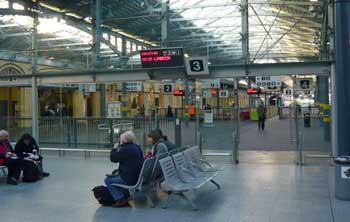
Let’s say you are staying at a hostel in Brussels, and two groups of new friends suggest that you go along with them to their next stops. One group is going to Bruges, which is a short and cheap journey, so you can join them by buying individual tickets (unless you have the unlimited pass, making it free). Then you restart your trip from Bruges, on to your next destination. The other group is headed to Berlin on a night train, which is long and expensive, but with a Eurail Pass you don’t even have to think about the cost. On you go, just like a rich person.
Buying a Eurail Pass is great for those who might run out of money
We all know people who keep meticulous track of every penny they spend, and who are always putting money away for a rainy day. And we all know people who can take a US$100 “entertainment fund” and burn through almost all of it in just a few hours. For the first type of person, a Eurail Pass can help you keep track of expenses, but it’s really the second type of person these are best for.
It’s sad to hear about people who have big plans to see their dream destinations, but they run out of money for transportation halfway into the trip, so they have to just stay put until they fly home. It happens. Locking in your major transportation costs before you leave home, and probably saving money in the process, is a wise move for anyone who isn’t as disciplined as they’d like with their money.
>>>Check prices on Eurail Passes
Bottom line: If you want to keep travel costs down, your choices will usually be a Eurail Pass or buying tickets at least a month or more early
In the last few years, almost every long-distance train ride in Europe has switched to a pricing system similar to low-cost airlines. In other words, tickets go on sale 2 to 6 months ahead of time at very low prices, and they keep getting more expensive as the train fills up and the date approaches. For most trips where a rail pass is possible, this is how things stack up:
Cheapest possible way: Buy advanced (non-refundable, non-changeable) train tickets at least 30 days in advance
Next cheapest way: Buy a Eurail Pass and make seat reservations as you go, usually only a day or less in advance.
Most expensive way: Buy train tickets as you go, or less than a week in advance.
Thinking about it this way should make the choice a bit easier. If you are the type who likes to plan each day and travel segment long before you even leave home, then buy tickets online for the best prices. This can be the best strategy for most shorter trips (10 days or less) because you simply don’t have enough time to change many things as you go anyway.
Buying a Eurail Pass won’t be quite as cheap, but you are buying a LOT of flexibility with the extra money. If you dream of making up your plans as you go, or even making up your plans just a few days in advance, this is almost always your best bet.
But if you wait too long, and just show up looking to buy train tickets as you go, they are going to cost a fortune. As recently as only a few years ago all seats would be the same price on many rail systems, so you could always just wing it. When each country computerized its rail systems so they can sell advanced tickets cheaper, they also had to keep track of seat reservations, so the whole pricing structure had changed to favor advanced ticket buyers and rail pass holders over those who’d prefer to just hop on any train as it is leaving the station.
Have a rail pass or itinerary question of your own?
It wasn’t planned but scores of people began asking me rail pass and itinerary questions at the bottom of this article and a few others. I’m happy to keep answering them and now I’m trying to organize them better as well so they are easier for other people to find.
If you have a question about specific types of European rail passes, please ask it in the comments below.
But if you have a question more about a European itinerary or other non-rail-pass questions, please click over to the European itineraries Q & A article and ask in the comments of that one.

Hey Roger, really enjoy reading your articles. You have a lot of travel knowledge. Thank you for that. Hope you can guide me the right way about this rail pass and which might be best suited for my trip. Im traveling from Canada with my spouse in May. Total trip is May 11-30.
Flying to warsaw and staying with family in Lodz for 31 nights.
So May 12-15 Lodz Poland
May 16-18 Prague
May 18-20 Austria
May 20-21 Switzerland
may 21-24 italy ( Florence , Venice )
May 25-30 France ( south france then Paris )
What would be the best option in your opinion.
Kam,
At first glance I’m thinking a rail pass wouldn’t suit you well, although it partly depends on how many stops you might do in Austria and/or Switzerland. Probably your best use of a rail pass would be to buy a 4-country Select Pass for Austria, Switzerland, Italy, and France. With two people traveling together in 1st Class you can get the “Saver” discount of 15%, and you can buy it for 5, 6, 8, or 10 travel days.
So no matter how you do it, you’ll want to buy tickets for Lodz to Prague and then Prague to Vienna (assuming you want to visit Vienna). Those trains will both be fairly cheap, and they’ll be even cheaper if you buy them online in advance from the appropriate official rail company (Poland, Czech, Austrian). Once you get to Vienna, the train fares would be quite a bit higher, so the 4-country Select Pass could be a good option. You’ll still need to make seat reservations on most of those trains (for about €5 each), but in 1st Class in the month of May, you should have little problem reserving seats on trains just before they are leaving.
This would mean that you could decide pretty much as you go, as far as what time you’ll leave and exactly where you’ll go, only needing those seat reservations. The other non-expensive option would be to buy all of those train tickets online well in advance. The fares might even be cheaper than the rail pass (especially since you have the 2nd Class option), but they would be non-refundable and non-changeable tickets, so your every movement would be locked in before you even left home.
So it mostly depends on if you want to keep some flexibility, if you are interested in traveling in 1st Class (it’s very nice, but 2nd Class is also comfortable), and how many stops you might make in each country.
By the way, Salzburg is a really interesting town for a quick visit in case you think you have time. Feel free to ask any other questions you might have. -Roger
Hey Roger,
I’m a Canadian and have been scouring your site the past few days (which is incredibly informative) in prep for a 14 day Euro trip in early July with my wife – we’re both 30.
Here’s my question: we are flying R/T to London, and have France, Switzerland, Germany and/or Belgium? in our sites, do you think the Eurail Saver Pass is worth it if we plan on visiting 4 – 6 cities in 4 countries?
I.E.
London: 2 nights (we’ve been before but really enjoy it)
Paris: 3 nights
Lucerne and/or Zurich: 3 nights combined
Berlin: 3 nights
Brussels: 1 night? then head back to London
We are totally open to other suggestions/advice on what you might think makes sense in terms of destinations and Eurorail options for good value. And is there perhaps be a benefit in going about this example itinerary clockwise vs. counterclockwise?
Cheers man, much appreciated!
Jonathan
Jonathan,
I’m always happy to hear that this information is useful. As for your itinerary, my hunch is that a rail pass would not be good value for you, although if it’s much different from what you mentioned, it might be. The thing is, on a 2-week trip like yours, especially one where you are trying to do 4 countries, you probably don’t need much flexibility in buying train tickets. In other words, you’ll need to stay on your schedule in order to make the whole trip work, so you are probably best off just buying all those train tickets online in advance. If you buy at least a month in advance, you’ll usually get a pretty decent fare, and those will generally add up to less than the price of a rail pass.
Rail passes are best for a longer trip or one where you would prefer to make your travel decisions as you go. Buying those same train tickets on travel day will be quite expensive, so if you really do prefer the flexibility, a rail pass could be best.
From London to Paris you’ll take the Eurostar, which is its own system so the best you could do is get a 25% discount if you have a rail pass. Buy the Eurostar tickets at least two months in advance if possible or they start getting expensive.
After Paris, you’ll only have 3 or 4 train journeys again before you’ll get back on the Eurostar in Brussels to head back to London. If you plan at least 5 rail journeys on the continent, and you really want to decide as you go, a rail pass could still be worth it. Otherwise, just buy them in advance ASAP and you’ll save the most money. -Roger
Hey Roger,
Your articles are very helpful! I will be going to Europe for about 7 weeks, and I was just wondering if you have any suggestions of places I should be sure to visit. I’m planning on spending about 2 weeks in Ireland and England, then going to the mainland and spending about 3 days in each city I go to, starting in Berlin. I’m 18, but I’ve gone to Germany for a month alone a couple years ago. I had planned on hitting the main tourist sites, but now I’m leaning more towards some of the low-key cities, and I would love to know if there’s any that you’ve come across that you would suggest I put into my plan before I start buying all my tickets.
Thank you for the articles- very informative!
Kelly
Kelly,
This sounds like a really exciting trip, especially if you’ll be able to drift around for a full 7 weeks. This is a challenging and very interesting question, and it’s really made me stop and think about this subject. I must admit that I’ve spent the vast majority of my Europe travels in the larger and more famous tourist cities. And when I’ve discovered something really appealing in a “lesser” destination, it’s usually because I found some really nice and friendly people there. For example, in late 2012 I actually lived in a town called Nis in Serbia for about 5 months. I made some really good friends there almost right away, and I found the town to be pleasant, plus being able to become friends with Serbians was interesting by itself. But I wouldn’t really recommend that anyone go out of their way to visit Nis even for a day because it’s unlikely that other people would have the same luck I did when I arrived.
In other words, thinking more deeply about this, I tend to think that the conventional wisdom among travel writers and travelers is pretty accurate. A small town like Rothenburg ob der Tauber (in Germany) is very touristy on the surface, yet it’s far more interesting than any other town in its area. And I also recommend that visitors to Europe focus first on top destinations (specifically London, Paris, Amsterdam, Venice, Rome) before they do much branching out into places with more subtle charms. As someone who has already spent a month in Germany, I think you know what I mean. Berlin itself is far more interesting than a random town 100 kilometers away from it.
Still, I’ll at least mention some places that I really like myself and would heartily recommend, even if they are also quite touristy.
In Ireland, I am one of many who feels that Dublin is a bit overrated, so I don’t recommend that people linger there. Galway is much smaller and friendlier, and there are dozens of smaller towns with castles and great scenery in between.
In England, there are some really cool places up north (York and the Yorkshire Dales being two examples) not to mention Scotland, but in two weeks total I think you are better off doing a week in Ireland and a week in southern England (with at least 3 days in London). The city of Bath is another one that is quite touristy, yet still worth a visit. I recommend staying in nearby Bristol and hopping the quick train to Bath for sightseeing. And Bristol itself is one of the coolest towns in Britain, as the home of Banksy and a strong creative community. Brighton is quite interesting as well, and it’s only an hour south of London by commuter train.
Once on the continent, the choices feel almost infinite. Bruges is very pleasant, although it’s like a small and low-key version of Amsterdam, so it may not be worth visiting both unless you are in the mood for a smaller town.
Here are some more of the (mostly famous and touristy) cities that I think live up to the hype: Copenhagen (although it’s expensive), Amsterdam, Berlin, Prague, Krakow, Salzburg, Paris (obviously), Venice, Rome, Barcelona, Madrid, Lisbon.
And here are two that aren’t on everyone’s list:
Tarifa, Spain – This is a small town that serves as a minor port for ferries to Morocco, but it has a historic town center and is also the windsurfing capital of Europe so it’s this unusual mix of small-town Spain and surf culture. And if you go here you’ll want to pop over to Morocco for at least a day or two if not more (at least if you are feeling brave enough at your age).
Sarajevo, Bosnia and Herzegovina – It’s not easy to reach unless you are touring the whole region, but Sarajevo is a fascinating city (and wonderfully cheap). It has a gorgeous setting between two mountain ranges, and a big part of the city center (maybe one third) is still dominated by Muslims. That large pedestrian-only area is actually a popular holiday destination for Muslims from the Middle East and elsewhere because it is safe and caters to them. But it’s also extremely friendly and welcoming to all. You can buy a €1 pint of beer in a bar that is just a few steps from a busy and large working mosque. At your age that might not mean much, but once you spend a lot of time in Muslim areas you’d agree that it’s a very pleasant and unique contrast.
As you can see, this has been a fun question to try to answer, so thank you for asking it. And feel free to follow up on the topic as you make your plans. -Roger
Hi Roger
we are planning for 22-25 days to Europe and will fly in to Paris. We will be going for a music festival at Belgium and thereafter will explore Europe and also bought Global pass.
we plan to travel to the counties below and not sure if it’s possible to achieve everything. Is there any off beat cities that you can recommend for us to make it a memorable trip?
France
Italty
Czeh Republic
Germany
Switzerland
Netherland
Belgium
Austria
Kat,
This is going to be an epic trip, but you definitely won’t have enough time to see more than just a few sights in each country if you really wanted to visit them all. I’ll really need more info in order to be of much help, so if you don’t mind, we can do this in two steps. Can you tell me how many total days you have, not including the (hopefully 3 or 4) days in Paris, and not including your time at the music festival? Also, what sort of Eurail Pass did you buy? (Is it for continuous days, or a Flexi-pass for a certain number of travel days in 2 months?) Knowing those parameters will help me narrow the recommendations.
I’m guessing that this is your first trip to Europe, or at least to the continent? Do you prefer larger cities or smaller ones? Most of the famous cities are large, of course, but not all of them, and there are some interesting smaller towns in between. And in which month will you be there? Some places are different in different months, so that could be useful to know as well. -Roger
Hey Roger,
Wow! Glad I found your site. So I have a Month in Europe Jun-Jul. Starts in Prague and ends in Zurich. I’ve already purchased a 17-day global eurail pass. The plan is to hit Budapest, maybe go far East through Romania, later Split Croatia. My priorities include 1) Split Croatia, 2. Ibiza, 3. Train it from somewhere in Spain to Zurich. Already figured out that a flight from Split to Ibiza is required in order to make this happen within my time frame. Any thoughts on what to look out for in between – Places to stay awhile, by train, boat, flight? Doable?
Many thanks!
James,
This is a very interesting trip you’ve got planned. As you’ve probably already learned, flights from Barcelona to Ibiza can be very cheap, while flights from Split to Ibiza would cost several times more and involve possibly awkward connections. In other words, if you can move your Ibiza visit to part of the Spain section of your trip, you’ll save a lot of money and time.
It sounds like you got the 15-continuous days Global Eurail Pass with the recent 2 free days promotion? That will be really nice when you are using it, and here’s one thing to consider when you are choosing where you’ll go. The trains going everywhere south of Budapest are pretty lousy compared to those to the west of Budapest. They are mostly older trains with low average speeds, with only a few departures each day. They also tend to be quite cheap compared to trains in the West, so in a way you don’t get the same value if you use a Global Pass to reach Belgrade or Bucharest. Even in Croatia, which is now fairly expensive, the trains aren’t great, although they are still the best way to get to Split.
So I’d think about using the rail pass to hit more destinations that have fast, comfortable, and expensive trains going between them. You could visit Vienna and/or make a one-day stop in the lovely Salzburg. You could even visit Venice for about 24 hours, which is actually an ideal amount of time to stay there. In 17 total days you’ll have to be in kind of a hurry no matter where you go, but with an unlimited rail pass you can obviously go anywhere. You might think about stopping in Nice for 2 days on your way from Italy to Barcelona.
You really have loads of great options, and it should be pretty easy to pull off, but it’s hard for me to recommend too much without knowing what interests you and where you’ve been before (in Europe). This sort of planning is really fun (when you don’t have to worry about each train ride), so I’m happy to help you sort it out more if you provide a bit more feedback about what you hope to do. -Roger
Hi Roger
What an amazing website – how do you find the time to give so much assistance and helpful advice to so many people.
We want to go from London via Eurostar on 26 August via Paris and on to Switzerland for 2 nights (don’t want any overnight trains). After reading your replies I think we will change the Swiss destination from Zurich to Lusanne as long as we can then catch a train from there to Venice.
We are doing a cruise from Venice and ending up in Barcelona on 11 Sept. Plan on 3 nights there then train to Paris where we will spend 4 nights before heading up again to London via Eurostar. Do you recommend we do a Eurail Select Pass 4 countries, 5 days and is 2nd class pretty good or are we better to buy 1st class. We are “young” seniors so although fit and healthy do like our creature comforts.
Last question, does Eurostar go through to Heathrow or do you have to change at St Pancras please.
Really appreciate any guidance or suggestions you can offer.
Very best wishes
Dale,
I’m glad you find this information and help useful. I really do enjoy trying to help people make their plans after spending so much time researching and exploring these places myself.
I’d actually recommend Lucerne rather than Lusanne in Switzerland, assuming you want to spend time exploring the Alps. Lucerne is on one of the main lines from Zurich to Milan, and to go to Venice you’d change in Milan on the way.
And I do think the 4-country Select Pass would be good value for you, especially if you are willing to travel in 2nd Class, but will you be taking 5 rides? It looks like Paris to Switzerland to Venice, which is 2 rides, and then 1 more from Barcelona to Paris. The Eurostar, as you may know, is its own system and you can’t use any rail pass as a ticket. If you have a rail pass you can qualify for about a 25% discount on a Eurostar ticket, but that’s it. Am I missing something here? If it’s only those 3 rides (plus the Eurostar) you are best off buying those online as early as possible (from the official rail websites for one country involved) for the best fares.
As for 1st Class vs 2nd Class, I’m a larger and taller person, and I’m comfortable enough in 2nd Class that the only time I ride in 1st Class if if there is some promotion or if I have a rail pass that wasn’t available in 2nd Class. Second Class is 4 seats across, and you often have a choice of compartments with bench seats, or airline-style seats with two on each side and an aisle in the middle. If the compartments are packed then the normal seats tend to be more comfortable, but often you’ll be sharing an 8-person compartment with few or no other people, and in that case you could actually lie down and sleep if you want. The trains you have in mind should all be newer and more modern ones, and those are usually more comfortable.
The Eurostar train has smaller seats and less legroom in 2nd Class, by the way. Fortunately it’s a pretty short ride because those seats are more like seats on a discount airline, and there is almost no interesting scenery (between London and Paris) as well.
And the Eurostar terminates at St. Pancras, so to get to Heathrow from there you’ll either take the Tube to Paddington Station for the Heathrow Express, or take the tube all the way to Heathrow on the Piccadilly Line.
Hi roger,
This is such a great site – so much useful information! Quick question, I’m in Italy for 11 night in July: flying into bologna, train straight to venice, after 3 nights train to Florence, after 4 nights train to rome. I’m 20 years old, would it be wise to purchase a one country eurail pass?
Thank you!!
Gabriella.
Gabriella,
Happy to hear that the information here is useful. As for a one-country rail pass for Italy, I don’t think they are good value for most people. Italy heavily subsidizes its railways, so tickets are fairly cheap in general. You can get really cheap tickets if you buy them online at least a few weeks in advance, if not longer, but only from http://www.trenitalia.com. The other factor is those cities you are going to are all fairly close together, so most of your train rides will only be around 2 hours.
An Italy rail pass is only good value for those who are going up and down the country in a short time. -Roger
Hi Roger
First of all, many thanks for all the clear and helpful info, and for helping out so many people. If you don’t mind, I have a few questions myself that I’m dying to get an answer to. My wife and I have planned our honeymoon for May 13-June 3 of this year. We will spend the first week between Ireland and London, but we have many friends there and I have been before, so no concerns there. Our concern is when we hit the continent. We considered buying the 15-day Global pass, as this is our proposed itinerary:
Munich (2 days)
Salzburg (2 days)
Venice and Florence (3 days)
Bern & Zermatt (3 days)
Paris (3 days)
Our questions are as follows:
1. We will need to get reservations for most of these connections, right?
2. We have been on some sites (e.g. raileurope.com), and it appears that even after we purchase the global 15 day pass, some of these reservations will cost upwards of 75-100 euros. Is this for real??
3. If it is for real, we may consider renting a car, as we have found that option to be HALF the price of a eurail pass. Of course, driving will get exhausting, so we’d prefer taking the trains, but if reservations are going to cost a lot ON TOP OF a eurail pass, then we will probably do that. Any strong opinions on renting a car?
Thank you very much in advance for your time. We sure do appreciate the help!
Adam
Adam,
You will need reservations for most, if not all, of those train rides on the continent that you have in mind, but the average cost of those will be around €5 each. The one exception is if you take the high-speed train from Bern to Paris, it could be a €25 reservation in 1st Class on that one train. The more expensive ones you read about are for Paris to Milan (€75 in 1st Class) and Paris to Amsterdam (€51 in 1st Class). Here’s a list of how much seat reservations cost on European trains.
The other train option would be to buy those tickets online very soon, and you’ll get fairly low prices on them. If you are able to choose and buy your non-refundable tickets now, it will probably be the cheapest option altogether. You aren’t really going too far on most trips, so the rail pass might not be good value. With a rail pass you’ll be able to decide on your train schedule as you go. If you are buying a 1st Class pass, you can usually get seat reservations just before the train leaves, but even in 2nd Class you can usually decide just the day before and you’ll be fine. So buying now is cheapest (if you buy online from official rail websites, not raileurope), but if you choose a rail pass you’ll have more flexibility, and in that case, raileurope offers the same prices as everyone else, and also really good service.
In either case, I really wouldn’t recommend renting a car for a trip like this. In addition to high fuel prices and road tolls, you’d find that parking is a non-stop headache when visiting cities. If you wanted to rent a car for a week-long drive through the French wine country, then it could be great. But for going from one crowded city to another, Europe purposely makes private cars and inefficient option. -Roger
Hi
I’m 19 and Im planning on a flight from London to Germnay on the 17th July as I want to attend Melt Festival in Ferropolis. And then I have 15 days to travel and I want to go to Poland, Czech Republic, Austria, and Italy (then a flight back home to the U.K). By looking at what you have written, it looks like a Eurail Select Pass would be the best option as they are all bordering countries. I think I would be better of getting a pass, but I want the train journeys to be overnight trains, as it saves on money for hostels and time. I’ve read that you have to pay extra for overnight trains on top of a pass, so would I be better of just booking point-to-point overnight trains now? Instead of buying a pass and paying all of the extras?
Thanks
Dean
Dean,
The Select Pass might be good for you, but generally rail passes tend not to be good value for overnight trains. How it works is that a pass would allow you to ride in a normal seat if you reserve one for about €5 each, but to get a couchette (bunk) it’s usually about €20 to €30 for that reservation. Trying to sleep in a normal seat really isn’t worth the small savings (at least for most of us). Also, as a European citizen, you’d have to look at the Interrail Passes instead of the Eurail Passes. They are usually cheaper, but with more restrictions, and I’m not sure if they have the Select Pass or not.
The cheapest way to do it if you are set on your dates and mostly want to take night trains would be to book them online as soon as possible from the official rail websites for the countries involved. Booking well in advance, you can sometimes get really low fares, like maybe €30 or €40 including a couchette.
But just to warn you, night trains are often not as great as they sound. I’ve written a long article discussing the pros and cons of night trains in Europe, and it will be published on the site in a few days. Still, at the age of 19, just go for it and book them early if the fares seem reasonable. -Roger
I have been reading articles, blogs, websites, book, magazines etc for the last 2 month and you have just cleared up everything in one! Thanks very much – saved a lot of time and fixed a lot of confusion. I’ll keep an eye out for the article as I have never did anything like this before – anything will help. I have read about the disadvantages of overnight trains but I think I should experience them myself; and at the age of 19, whens a better time to do so! Just a quick question so i know were I stand with prices.. What’s cheap and whats expensive for overnight trains? Thanks very much man appreciate it.
Dean
Dean,
That’s very nice of you to say, and I enjoy trying to help people with such a confusing system.
As for what’s considered “cheap”, that’s tough to say but I’ll try. Train fares on the continent can be in a huge range depending on the route. For example, Krakow to Budapest might only be €20 if you buy in advance, while Brussels to Paris might be €80 for about the same distance. The best way to check yourself is to go to http://www.bahn.de (the German Rail site), which is the best site for checking fares all over Europe. Keep in mind that if you check for a train leaving tomorrow, the price will be very high, while if you check 2 or 3 months out, the same seat could be maybe one-third the price.
So check the trains you are thinking of taking, as far in advance as possible. If the night train carriages are still pretty empty you can see fares as low as €30 or €40 (as I mentioned), including a couchette. The day trains on the same route might be €70 or €80 just for a seat, although they also go faster during the day. If you see a low fare for a night train, get it, but if the fares are similar to the day-train fares, it might not be good value in the end. Best of luck on all of this. -Roger
Hi Roger,
Thanks for such a helpful article! My wife and I will be travelling to Europe for a 30 day trip on this April to May and would love to get any suggestions on our itinerary and transportation.
Day 1 – land in Paris
Day 2-4 – Paris
Day 5-8 – Belgium / Netherlands (still considering which one should I choose)
Day 8-10 – back to Paris,got an urgent work to do at Paris
Day 11-14 – Switzerland
Day 15-23 Italy (Milan,Venice,Florence & Rome)
Day 24-28 Barcelona
Day 29-30 back to Paris and flight out
Do you think that itinerary is too hectic or should that be fine? Also what modes of transportation would you suggest? We’re currently looking into the Eurail global pass.
Thanks for your help!
Jepe,
Your itinerary looks quite good and well thought out.
As interesting as Belgium can be, nothing there really compares to Amsterdam so I’d recommend basing yourself there for those days. The one little trick you might try is to plan on spending a few hours in Brussels on the way to or from Amsterdam. The city center of Brussels is really spectacular, particularly the area around the “Grand Place” (main square). The Mannequin Pis statue is small and barely worth a look, but it’s only a short walk from the main center so check it out anyway. The rest of Brussels is less interesting (and mainly built for business people and bureaucrats), so an afternoon there is the perfect amount. Bruges is the other main attraction in Belgium, and it’s pretty much just a smaller and more relaxed version of Amsterdam, so you can save it for another trip.
For Switzerland my advice to most people is to skip the big (and very expensive) cities and just base yourself in either Interlaken or Lucerne for a few days admiring the Alps and the outdoors in general.
With only 8 days in Italy, I’d probably skip Milan, although a day there might be fun. Except for a few key spots, Milan is mostly a large and somewhat generic big city, while the others on your list are loaded with sights and much more Italian. Plan 3 or 4 days in Rome, 2 or 3 days in Florence (a side trip to Pisa for an afternoon is easy from there), and only 1 or 2 days in Venice because it’s quite small and also insanely crowded.
From Italy to Barcelona you are probably best off flying, probably from Rome. The train through southern France would take a long time and probably cost a lot. From Barcelona you can take the new high-speed train to Paris.
As for getting around, you’ll want to take the train on all of these journeys except perhaps from Rome to Barcelona. Much of your route is very scenic, and trains in general are just a much more pleasant way to travel.
Except for a couple of the legs within Italy, the train journeys you have in mind are all quite expensive if bought on their own. The absolute cheapest way to do it would be to buy all of your (non-refundable, non-changeable) train tickets as far in advance as possible, which in your case is right now. Even then, some of them might be expensive because your trip isn’t far off.
However, if you want more flexibility within the trip, a rail pass could be perfect. You’ll usually need to pay for a seat reservation on the trains you take, but they are around €5 each and you can usually get them on travel day or the day before. Being able to go earlier or later or to someplace different altogether is really nice on a longer trip like yours.
Your options would be the Global Pass, and the Flexi-Pass version with 10 travel days in 2 months is probably best. Or you can buy a 4-country Select Pass including France, Switzerland, Italy, and Benelux (those 3 countries are only counted as one, which is nice). A Eurail Select Pass is cheaper and the only thing it wouldn’t cover would be the portion of Spain from Barcelona to the France border, which isn’t very far. When using a rail pass like this they will just ask you to pay a small amount to travel in the country where your pass isn’t valid, so if it’s a €80 ride, you might pay €10 and use your rail pass for the rest. Or you could pay for a train from Barcelona to a nearby town in France, and use the rail pass for the train to Paris from there.
I really don’t think your plan is too hectic at all. You’ll be rushing around a bit, but at least you are staying long enough in all the best cities to see them properly. It’s only when someone plans on changing cities every day or every other day that it becomes a bad idea. Best of luck, and feel free to ask any questions you might have. -Roger